Process Parameter Optimization of Extrusion-Based 3D Metal Printing Utilizing PW–LDPE–SA Binder System
Abstract
:1. Introduction
2. Experimental Section
2.1. Materials
2.2. Raw Materials Preparation
2.3. 3D Printing Process
2.4. Post-Process
2.5. Orthogonal Experiment Design
2.6. Characterization
3. Results and Discussion
3.1. Materials and Rheological Behaviour
3.2. Printing Process Optimization
3.3. Warpage Deformation of the Green Samples
3.4. Debinding
3.5. Sintering Process Optimization
3.6. The Sintered Samples
4. Conclusions
- (1)
- The raw materials with Cu particle content of 65 vol % can be prepared with the PW–LDPE–SA thermoplastic binder systems. The powder particles are homogeneously dispersed in the raw materials, and the rheological behaviour is fit for printing.
- (2)
- During the printing process, the infill degree exerted the strongest effect on the ultimate tensile strength of the green sample, followed by the raster angle, and the layer thickness is the weakest. The orthogonal test showed that the optimal combination was infill degree (80%), layer thickness (2 mm), and raster angle (+45°/−45°). Testing also showed that the ultimate tensile strength can reach 6.73 ± 0.6 MPa.
- (3)
- During the sintering process, the influence factors on the hardness of the sample can be described as follows: highest temperature > holding time > heating rate. The orthogonal test showed that the optimal combination was heating rate (3 °C/min), highest temperature (1083 °C), and holding time (3 h).
Acknowledgments
Author Contributions
Conflict of Interest
References
- Ahn, S.-H.; Montero, M.; Roundy, S.; Dan, O.; Wright, P.K. Anisotropic material properties of fused deposition modeling ABS. Rapid Prototyp. J. 2002, 8, 248–257. [Google Scholar] [CrossRef]
- Lee, B.H.; Abdullah, J.; Khan, Z.A. Optimization of rapid prototyping parameters for production of flexible ABS object. J. Mater. Process. Technol. 2005, 169, 54–61. [Google Scholar] [CrossRef]
- Pei, D.E. Direct 3D printing of polymers onto textiles: Experimental studies and applications. Rapid Prototyp. J. 2015, 21, 556–571. [Google Scholar] [CrossRef]
- Wu, G.; Langrana, N.A.; Sadanji, R.; Danforth, S. Solid freeform fabrication of metal components using fused deposition of metals. Mater. Des. 2002, 23, 97–105. [Google Scholar] [CrossRef]
- Scheithauer, U.; Schwarzer, E.; Richter, H.-J.; Moritz, T. Thermoplastic 3D Printing—An Additive Manufacturing Method for Producing Dense Ceramics. Int. J. Appl. Ceram. Technol. 2014, 12, 26–31. [Google Scholar] [CrossRef]
- Scheithauer, U.; Bergner, A.; Schwarzer, E.; Richter, H.-J.; Moritz, T. Studies on thermoplastic 3D printing of steel-zirconia composites. J. Mater. Res. 2014, 29, 1931–1940. [Google Scholar] [CrossRef]
- Hong, S.; Sanchez, C.; Du, H.; Kim, N. Fabrication of 3D Printed Metal Structures by Use of High-Viscosity Cu Paste and a Screw Extruder. J. Electron. Mater. 2015, 44, 836–841. [Google Scholar] [CrossRef]
- Ren, X.; Shao, H.; Lin, T.; Zheng, H. 3D gel-printing—An additive manufacturing method for producing complex shape parts. Mater. Des. 2016, 101, 80–87. [Google Scholar] [CrossRef]
- Sun, Y.; Peng, C.; Wang, X.; Wang, R.; Chen, Y.; Zhang, D. Phase Behavior of Polyelectrolyte Complexes and Rheological Behavior of Alumina suspensions for Direct Ink Writing. J. Am. Ceram. Soc. 2016, 99, 1902–1910. [Google Scholar] [CrossRef]
- Sun, L.; Parker, S.T.; Syoji, D.; Wang, X.; Lewis, J.A.; Kaplan, D.L. Direct-Write Assembly of 3D Silk/Hydroxyapatite Scaffolds for Bone Co-Cultures. Adv. Healthc. Mater. 2012, 1, 729–735. [Google Scholar] [CrossRef] [PubMed]
- Li, Y.Y.; Li, L.T.; Li, B. Direct write printing of three-dimensional ZrO2, biological scaffolds. Mater. Des. 2015, 72, 16–20. [Google Scholar] [CrossRef]
- Yang, S.; Yang, H.; Chi, X.; Evansa, J.R.G.; Thompsonb, I.; Cookb, R.J. Paul Robinson Rapid prototyping of ceramic lattices for hard tissue scaffolds. Mater. Des. 2008, 29, 1802–1809. [Google Scholar] [CrossRef]
- Jakus, A.E.; Taylor, S.L.; Geisendorfer, N.R.; Dunand, D.C.; Shah, R.N. Metallic Architectures from 3D-Printed Powder-Based Liquid Inks. Adv. Funct. Mater. 2015, 25, 6985–6995. [Google Scholar] [CrossRef]
- Wang, K.; Stark, J.P.W. Direct fabrication of electrically functional microstructures by fully voltage-controlled electrohydrodynamic jet printing of silver nano-ink. Appl. Phys. A. 2010, 99, 763–766. [Google Scholar] [CrossRef]
- Ru, C.; Luo, J.; Xie, S.; Sun, Y. A review of non-contact micro- and nano-printing technologies. J. Micromech. Microeng. 2014, 24, 053001. [Google Scholar] [CrossRef]
- Ko, S.H.; Chung, J.; Hotz, N.; Nam, K.H.; Grigoropoulos, C.P. Metal nanoparticle direct inkjet printing for low-temperature 3D micro metal structure fabrication. J. Micromech. Microeng. 2010, 20, 125010. [Google Scholar] [CrossRef]
- Mohamed, O.A.; Masood, S.H.; Bhowmik, J.L. Optimization of fused deposition modeling process parameters:a review of current research and future prospects. Adv. Manuf. 2015, 3, 42–53. [Google Scholar] [CrossRef]
- Hauck, P.A. Power Injection Molding Design & Applications. Int. J. Powder Metall. 2004, 40, 47. [Google Scholar]
- German, R.M.; Bose, A. Injection Molding of Metals and Ceramics; Metal Powder Industries Federation: Princeton, NJ, USA, 1997. [Google Scholar]
- Liu, Z.Y.; Loh, N.H.; Tor, S.B.; Khor, K.A. Characterization of powder injection molding feedstock. Mater. Charact. 2002, 49, 313–320. [Google Scholar] [CrossRef]
- Knights, M. Metal-Powder Injection Molding Moves Into Larger Parts. Plast. Technol. 2003, 49, 43–44. [Google Scholar]
- Volpato, N.; Kretschek, D.; Foggiatto, J.A.; Gomez da Silva Cruz, C.M. Experimental analysis of an extrusion system for additive manufacturing based on polymer pellets. Int. J. Adv. Manuf. Technol. 2015, 81, 1519–1531. [Google Scholar] [CrossRef]
- Carneiro, O.S.; Silva, A.F.; Gomes, R. Fused deposition modeling with polypropylene. Mater. Des. 2015, 83, 768–776. [Google Scholar] [CrossRef]
- Zhou, C. Polymer Rheological Experiments and Applications; Profile of Shanghai Jiao Tong University Press: Shanghai, China, 2003. [Google Scholar]
- Butscher, A. Powder based three-dimensional printing of calcium phosphate structures for scaffold engineering. Acta Biomater. 2013, 9, 5369–5378. [Google Scholar] [CrossRef] [PubMed]
- Onwubolu, G.C.; Rayegani, F. Characterization and Optimization of Mechanical Properties of ABS Parts Manufactured by the Fused Deposition Modelling Process. Int. J. Manuf. Eng. 2014, 2786, 94–111. [Google Scholar] [CrossRef]
- Wang, T.M.; Xi, J.T.; Jin, Y. A model research for prototype warp deformation in the FDM process. Int. J. Adv. Manuf. Technol. 2007, 33, 1087–1096. [Google Scholar] [CrossRef]
- Frigola, P.; Harrysson, O.A.; Horn, T.J.; West, H.A.; Aman, R.L.; Rigsbee, J.M.; Ramirez, D.A.; Murr, L.E.; Medina, F.; Wicker, R.B.; Rodriguez, E. Fabricating Copper Components with Electron Beam Melting. Adv. Mater. Process. 2014, 172, 20–24. [Google Scholar]
- Sciammarella, F.M.; Gonser, M.; Styrcula, M. Laser Additive Manufacturing of Pure Copper. Rapid 2013, 71, 1241–1248. [Google Scholar]
- Ramirez, D.A. Microstructural Architecture Developed in the Fabrication of Solid and Open-Cellular Copper Components by Additive Manufacturing Using Electron Beam Melting; Dissertations & Theses-Gradworks: El Paso, TX, USA, 2011. [Google Scholar]
- Ramirez, D.A.; Murr, L.E.; Li, S.J.; Tian, Y.X.; Martinez, E.; Martinez, J.L.; Machado, B.I.; Gaytan, S.M.; Medina, F.; Wicker, R.B. Open-cellular copper structures fabricated by additive manufacturing using electron beam melting. Mater. Sci. Eng. A 2011, 528, 5379–5386. [Google Scholar] [CrossRef]
- Jackson, T.R.; Liu, H.; Patrikalakis, N.M.; Sachsb, E.M.; Cimac, M.J. Modeling and designing functionally graded material components for fabrication with local composition control. Mater. Des. 1999, 20, 63–75. [Google Scholar] [CrossRef]
- Cho, W.; Sachs, E.M.; Patrikalakis, N.M.; Troxel, D.E. A dithering algorithm for local composition control with three-dimensional printing. Comput.-Aided Des. 2003, 35, 851–867. [Google Scholar] [CrossRef]
- Pequegnat, A.; Panton, B.; Zhou, Y.N.; Khan, M.I. Local composition and microstructure control for multiple pseudoelastic plateau and hybrid self-biasing shape memory alloys. Mater. Des. 2016, 92, 802–813. [Google Scholar] [CrossRef]
- Hofmann, D.C.; Kolodziejska, J.; Roberts, S.; Otis, R.; Dillon, R.P.; Suh, J.-O.; Liu, Z.-K.; Borgonia, J.-P. Compositionally graded metals: A new frontier of additive manufacturing. J. Mater. Res. 2014, 29, 1899–1910. [Google Scholar] [CrossRef]
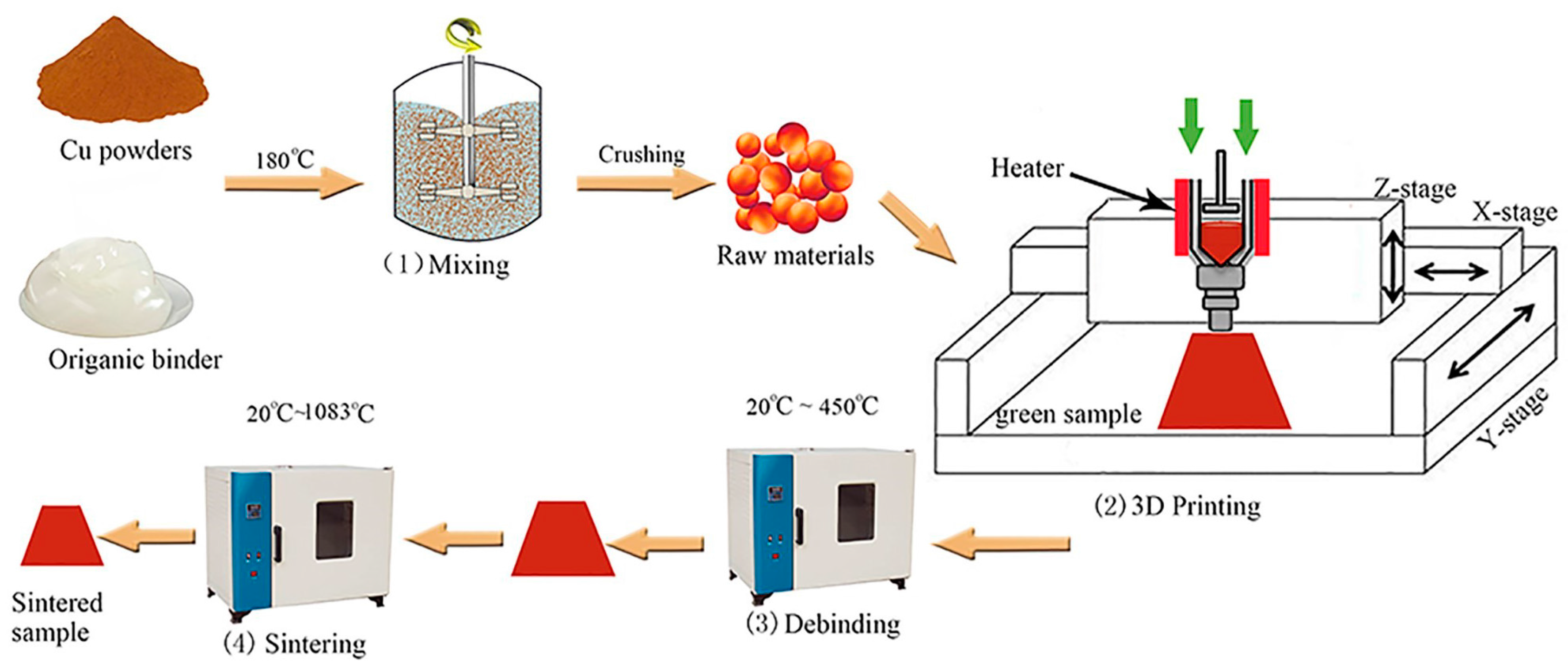
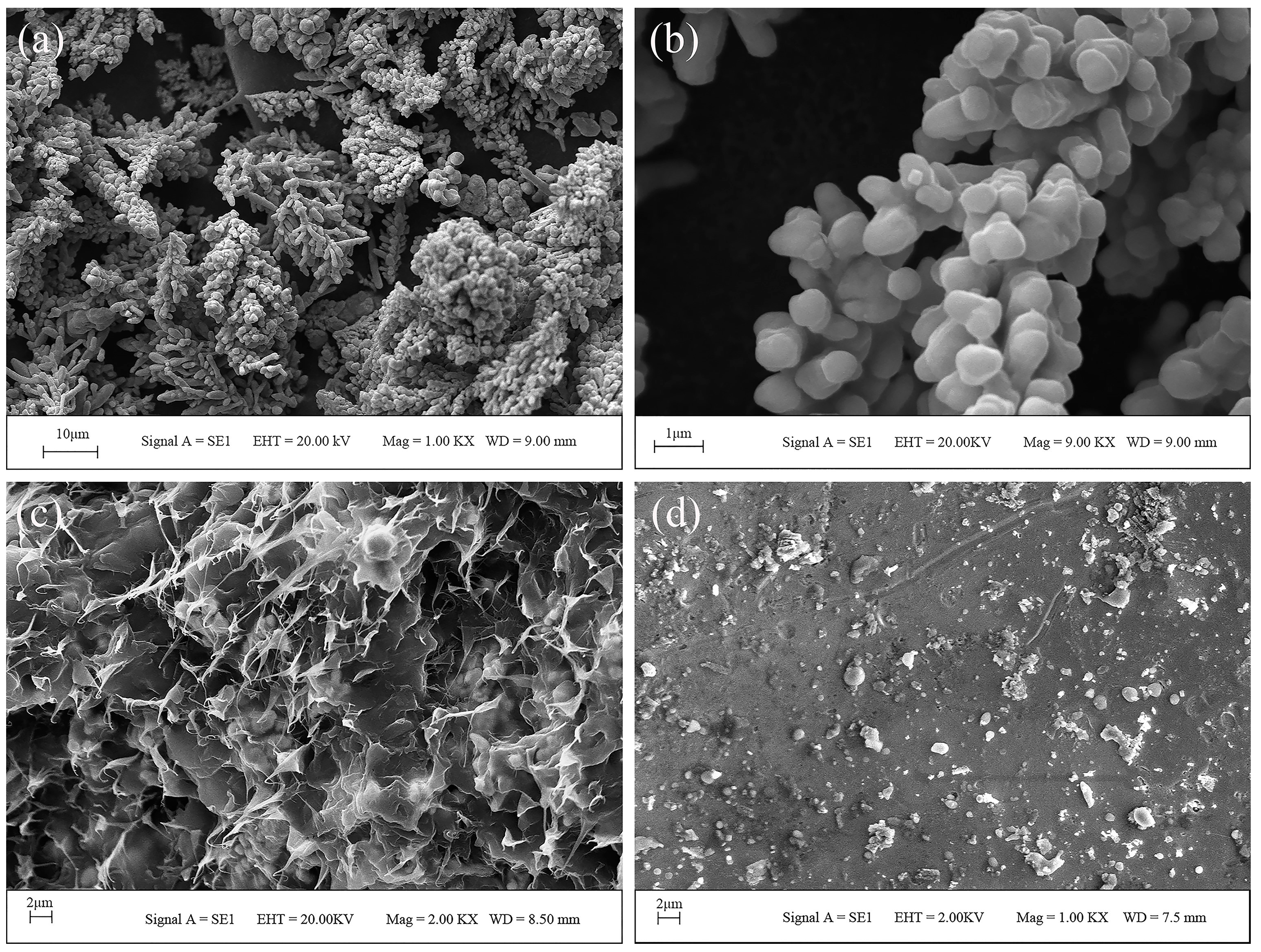
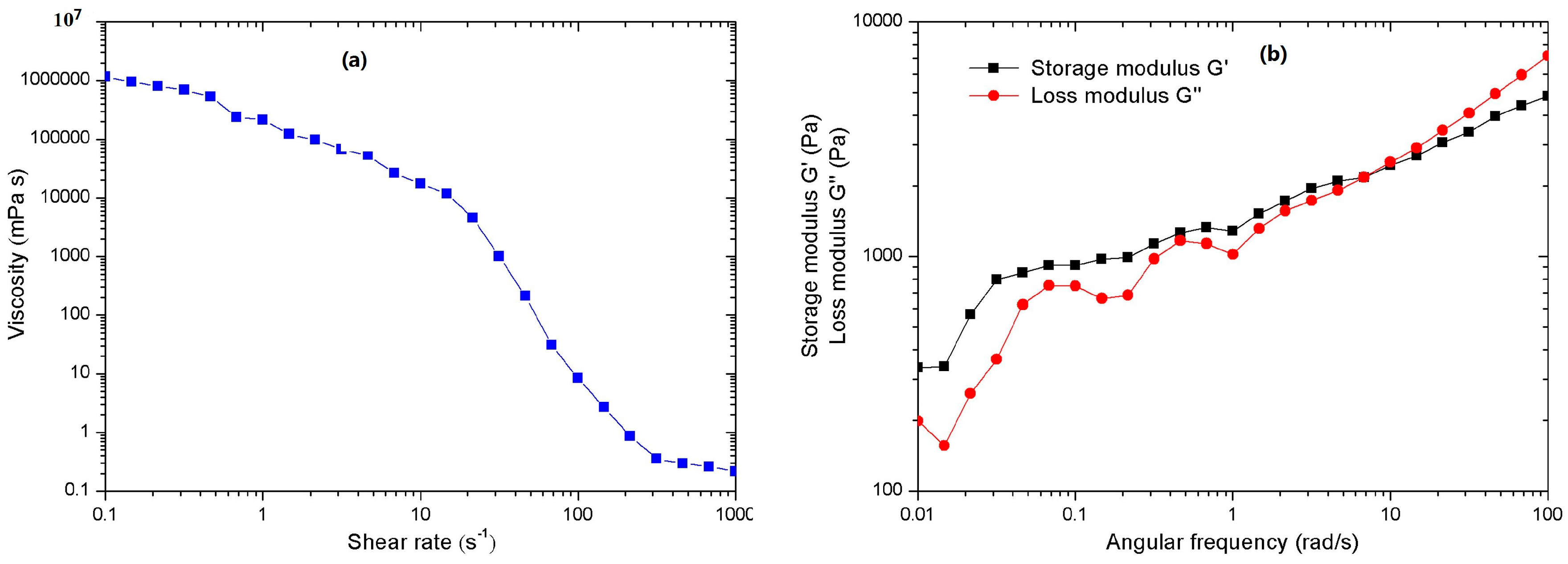
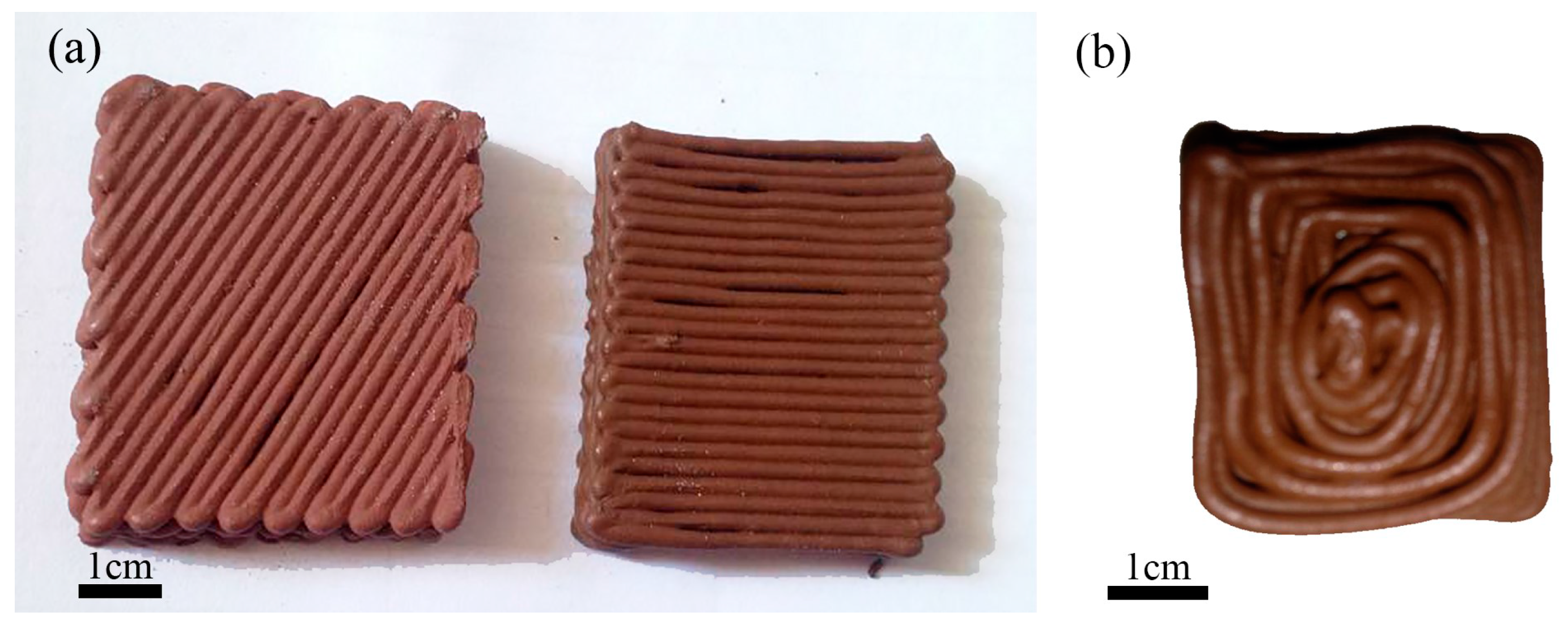
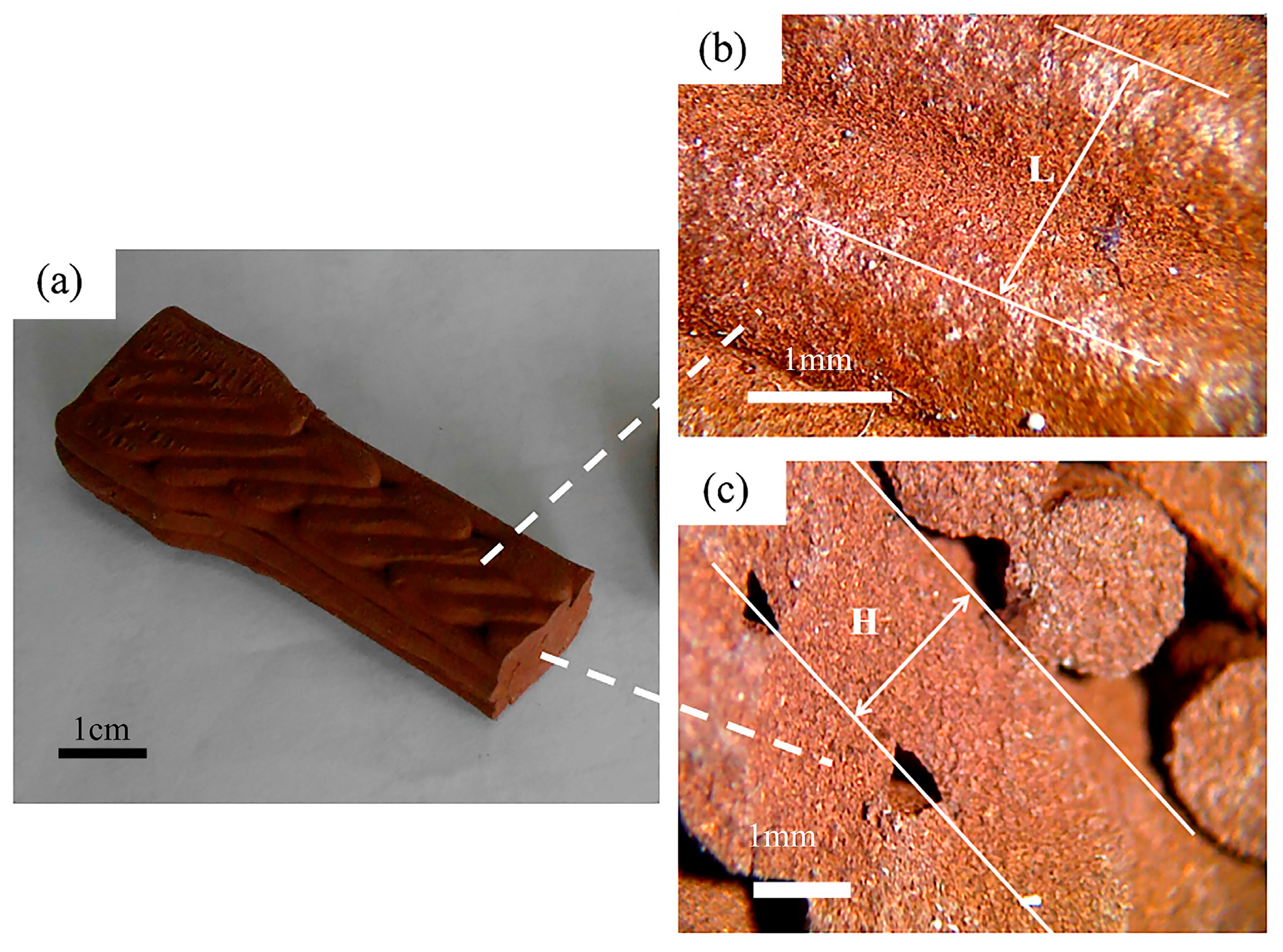

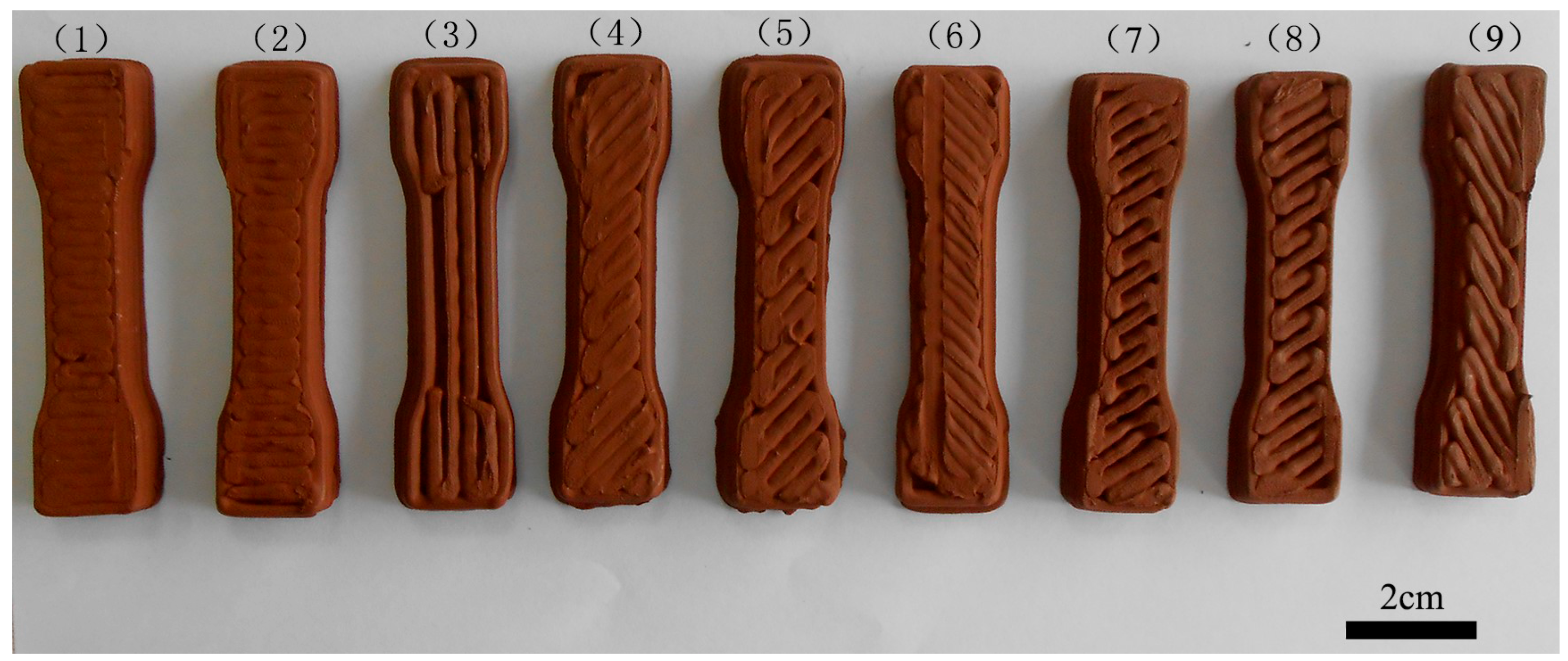

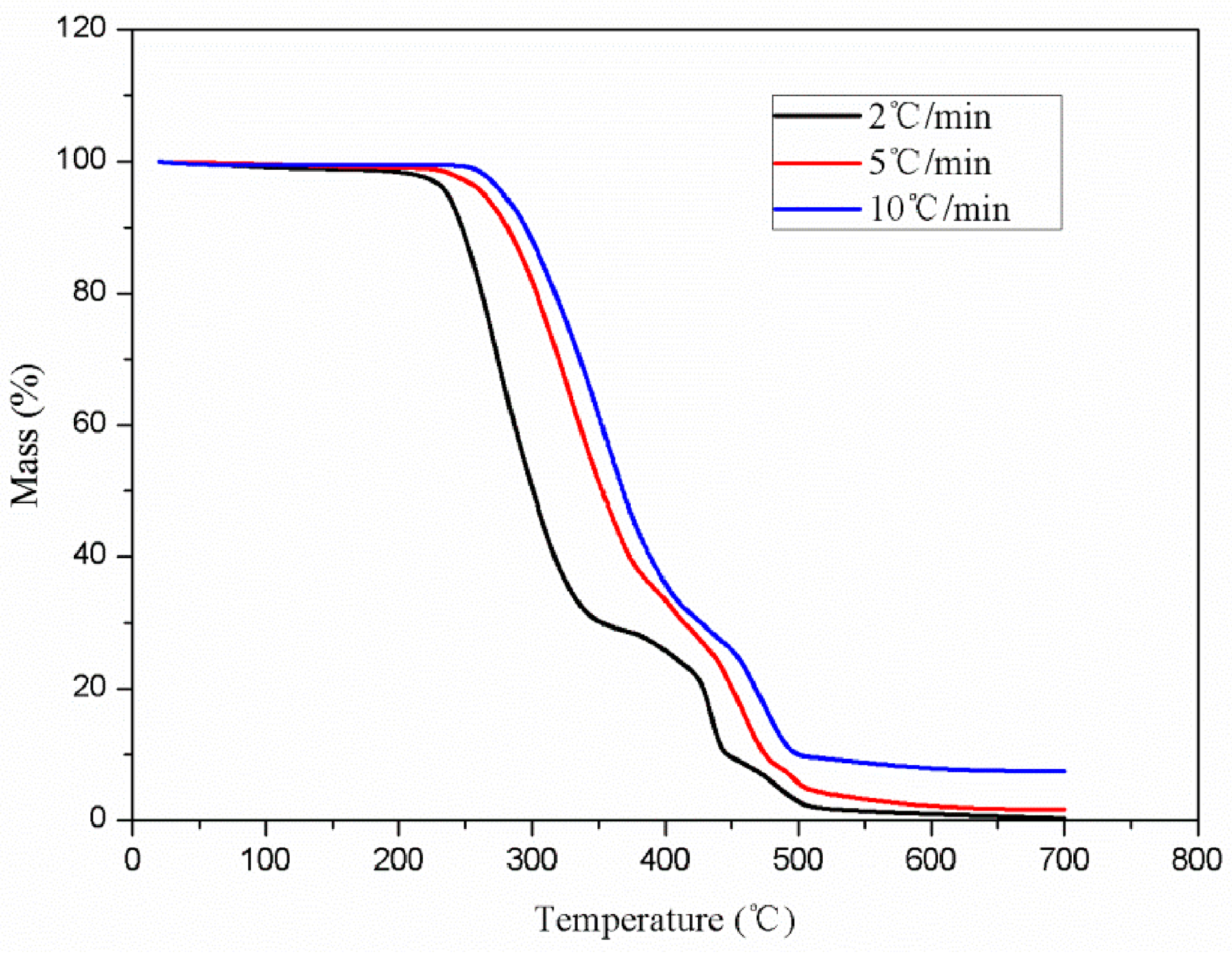
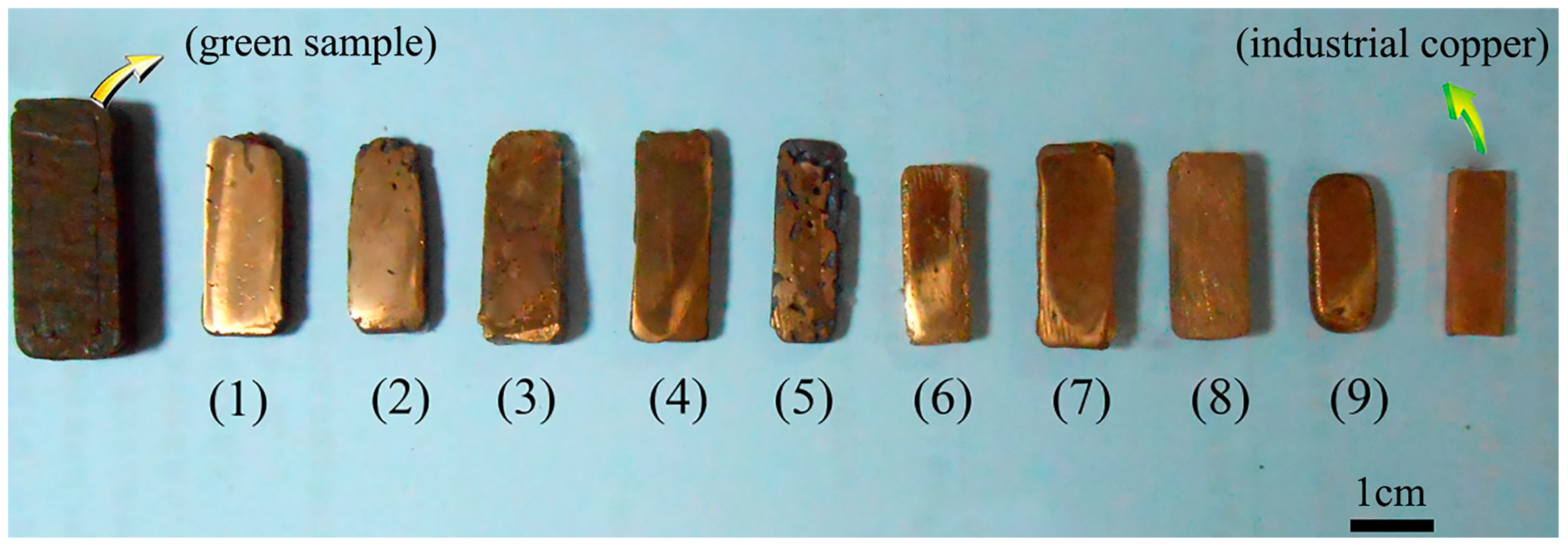
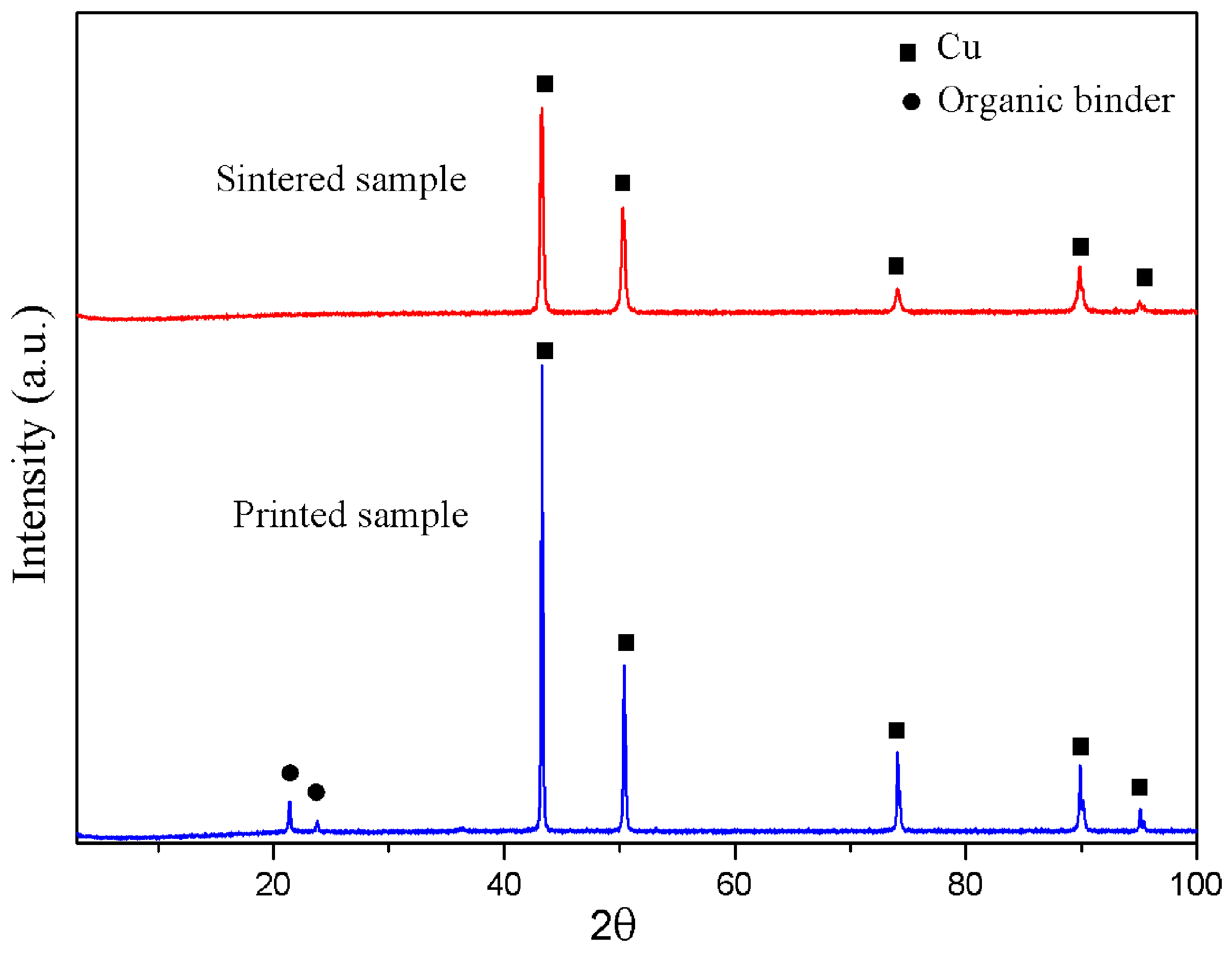


| Raw Materials | Content vol % | |
|---|---|---|
| Cu powders | 65 | |
| Organic binder | 74 wt % paraffin wax (PW) | 35 |
| 23 wt % low-density polyethylene (LDPE) | ||
| 3 wt % stearic acid (SA) | ||
| Raster Angle/(°) | Layer Thickness (mm) | Infill Degree (%) |
|---|---|---|
| 0/90 | 1.6 | 80 |
| 45/−45 | 1.8 | 70 |
| 60/−30 | 2.0 | 60 |
| Heating Rate (°C/min) | Highest Temperatures (°C) | Holding Time (h) |
|---|---|---|
| 3 | 950 | 1 |
| 5 | 1000 | 2 |
| 8 | 1083 | 3 |
| Powder Type | Mean Size (μm) | Specific Surface Area (m2/g) | Bulk Average Size (μm) | ||
|---|---|---|---|---|---|
| D10 | D50 | D90 | |||
| Cu | 11.96 | 35.57 | 80.98 | 0.19 | 41.06 |
| Printing Conditions | Value |
|---|---|
| Extrusion temperature | 160 °C |
| Extrusion head speed | 360 mm/min |
| Piston speed | 0.047 mm/s |
| Nozzle diameter | 2 mm |
| NO. | Raster Angle (°) | Layer Thickness (mm) | Infill Degree (%) | Ultimate Tensile Strength (MPa) |
|---|---|---|---|---|
| 1 | 0/90 | 1.6 | 80 | 5.08 ± 0.45 |
| 2 | 0/90 | 1.8 | 70 | 5.57 ± 0.61 |
| 3 | 0/90 | 2.0 | 60 | 4.21 ± 0.29 |
| 4 | 45/−45 | 1.6 | 70 | 5.66 ± 0.51 |
| 5 | 45/−45 | 1.8 | 60 | 3.35 ± 0.28 |
| 6 | 45/−45 | 2.0 | 80 | 6.73 ± 0.87 |
| 7 | 60/−30 | 1.6 | 60 | 5.17 ± 0.49 |
| 8 | 60/−30 | 1.8 | 80 | 5.13 ± 0.44 |
| 9 | 60/−30 | 2.0 | 70 | 5.12 ± 0.38 |
| j1 | 4.95 | 5.30 | 5.65 | |
| j2 | 5.24 | 4.68 | 5.45 | |
| j3 | 5.14 | 5.35 | 4.24 | |
| RJ | 0.29 | 0.67 | 1.41 | |
| Primary and secondary factor | Infill degree > Layer thickness > Orientation | |||
| Optimal combination | Orientation (45°/−45°)—Layer thickness (2 mm)—Infill degree (80%) | |||
| NO. | Heating Rate (°C/min) | Highest Temperature (°C) | Holding Time (h) | Vickers Hardness (HV) |
|---|---|---|---|---|
| 1 | 3 | 950 | 1 | 10.42 ± 0.87 |
| 2 | 3 | 1000 | 2 | 14.97 ± 1.02 |
| 3 | 3 | 1083 | 3 | 63.04 ± 0.60 |
| 4 | 5 | 950 | 3 | 16.12 ± 0.91 |
| 5 | 5 | 1000 | 1 | 14.85 ± 1.34 |
| 6 | 5 | 1083 | 2 | 54.65 ± 2.92 |
| 7 | 8 | 950 | 2 | 12.12 ± 1.55 |
| 8 | 8 | 1000 | 3 | 21.72 ± 1.45 |
| 9 | 8 | 1083 | 1 | 52.98 ± 4.60 |
| j1 | 29.48 | 12.89 | 26.08 | |
| j2 | 28.54 | 17.18 | 27.25 | |
| j3 | 28.94 | 56.89 | 33.62 | |
| RJ | 0.94 | 44 | 7.54 | |
| Primary and secondary factors | Highest temperature > Holding time > Heating rate | |||
| Optimal combination | Heating rate (3 °C/min)—Highest temperature (1083 °C)—Holding time (3 h) | |||
| Dimension | Shrinkage % |
|---|---|
| Length | 20.85 |
| Width | 21.19 |
| Thickness | 21.06 |
| Process | Vickers Hardness (HV) | Density (g·cm−3) | Tensile Strength (MPa) | Yield Strength (MPa) | Electric Conductivity (Ω·mm2/m) |
|---|---|---|---|---|---|
| Extrusion-based 3D metal printing | 63.04 | 8.15 | 175 | 51 | 0.114940 |
| Wrought Copper [28] | 57 | 8.90 | _ | 69 | 0.016903 |
| Laser additive manufacturing (LAM) [29] | 73 | _ | _ | _ | _ |
| Electron beam melting (EBM) [28,30,31] | 88 | 8.84 | _ | 76 | 0.017774 |
© 2017 by the authors. Licensee MDPI, Basel, Switzerland. This article is an open access article distributed under the terms and conditions of the Creative Commons Attribution (CC BY) license ( http://creativecommons.org/licenses/by/4.0/).
Share and Cite
Ren, L.; Zhou, X.; Song, Z.; Zhao, C.; Liu, Q.; Xue, J.; Li, X. Process Parameter Optimization of Extrusion-Based 3D Metal Printing Utilizing PW–LDPE–SA Binder System. Materials 2017, 10, 305. https://doi.org/10.3390/ma10030305
Ren L, Zhou X, Song Z, Zhao C, Liu Q, Xue J, Li X. Process Parameter Optimization of Extrusion-Based 3D Metal Printing Utilizing PW–LDPE–SA Binder System. Materials. 2017; 10(3):305. https://doi.org/10.3390/ma10030305
Chicago/Turabian StyleRen, Luquan, Xueli Zhou, Zhengyi Song, Che Zhao, Qingping Liu, Jingze Xue, and Xiujuan Li. 2017. "Process Parameter Optimization of Extrusion-Based 3D Metal Printing Utilizing PW–LDPE–SA Binder System" Materials 10, no. 3: 305. https://doi.org/10.3390/ma10030305
APA StyleRen, L., Zhou, X., Song, Z., Zhao, C., Liu, Q., Xue, J., & Li, X. (2017). Process Parameter Optimization of Extrusion-Based 3D Metal Printing Utilizing PW–LDPE–SA Binder System. Materials, 10(3), 305. https://doi.org/10.3390/ma10030305







